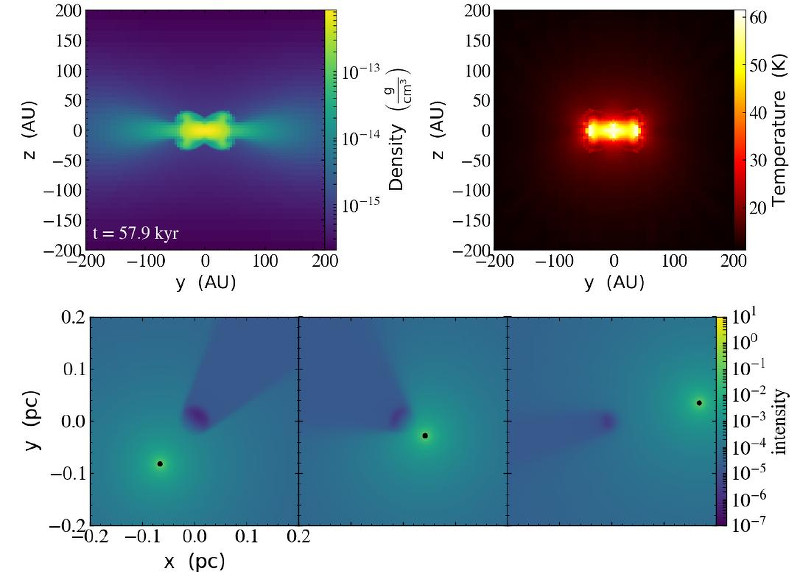| EPoS Contribution |
|
Early Phases of Protostellar Discs -- The Role of Radiative Feedback
Manuel Jung HS, Hamburg, DE | |
| All protostars are surrounded by a disc-like structure or a proper Keplerian disc. Those discs are essential to understand the subsequent evolution of the protostar and are most probably the birthplaces of binary or multiple stellar systems, apart from being the nurseries of planets. Nevertheless, it is fairly unknown how the discs, and hence the protostars are decoupled from the infalling envelope and molecular clouds. Therefore we execute self-consistent simulations with radiation feedback of protostars and discs which are still embedded in an accreting envelope to track their late evolution. For this we employ our in-house developed hybrid characteristics radiation transfer scheme for diffuse background radiation, which is build upon FLASH. Recently this solver has been extended to include the radiation of point sources as demonstrated in the figure (bottom). The point sources are modelled by sink particles coupled to a star formation evolution model. Therefore these young stellar objects can irradiate the surrounding disk and envelope. We present first results from cloud core collapse simulations generating low mass stellar objects with radiation feedback. If a star particle is not yet formed or its mass is still below 0.1 Msol, the radiation field is composed of background radiation and by compression and shock heating. A dense, thick disk is generated on the smallest scales < 50AU, which is heated by accretion shocks parallel to the disk plane. On larger scales a flared accretion disk is formed. Later in the evolution of the protostellar disk, the star particle contributes significantly to the radiation field. | |
 | |
| Caption: The figure (top) shows the result of a simulation of a low mass molecular cloud collapse. In this non-turbulent simulation a protostellar disk has already been formed. Since the central core has become optically thick, cooling by radiation is not effective any more. As a result the core heats up. If the central core contracts further the formation of a protostar is imminent. The bottom part of the figure demonstrates the illumination of a spherical optically thick cloud in the center of the simulation domain by a point source. Sharp shadows are casted, which are partly reilluminated by the diffuse background radiation. | |
| Collaborators: R. Banerjee, HS, DE |
Suggested Session:
Protostellar disks |

